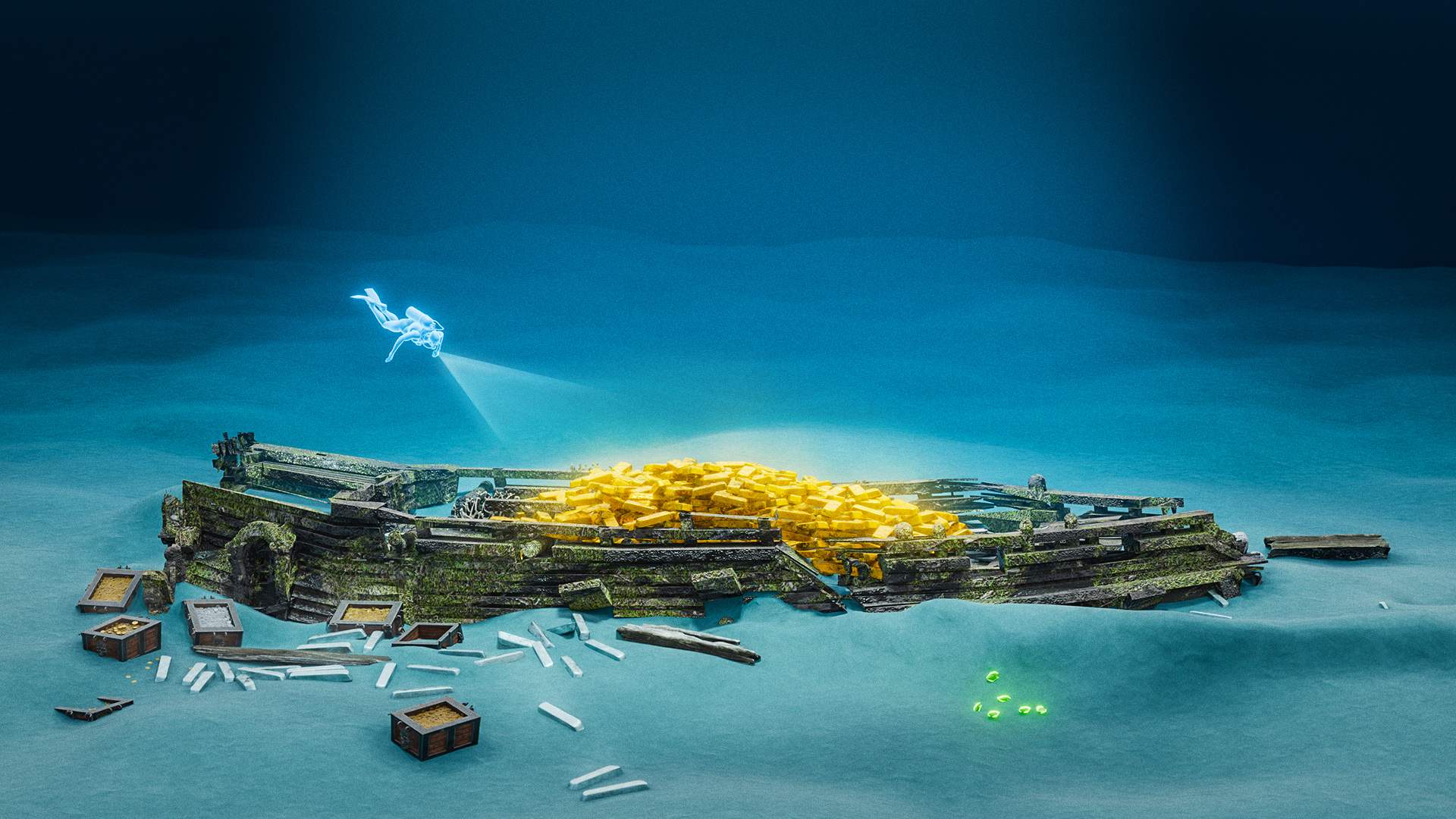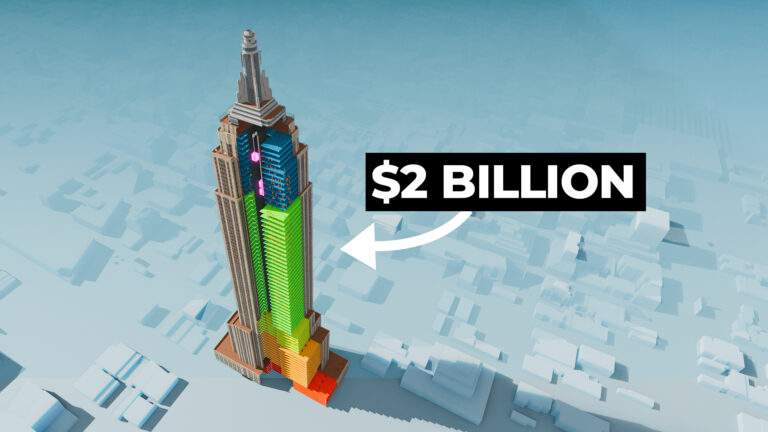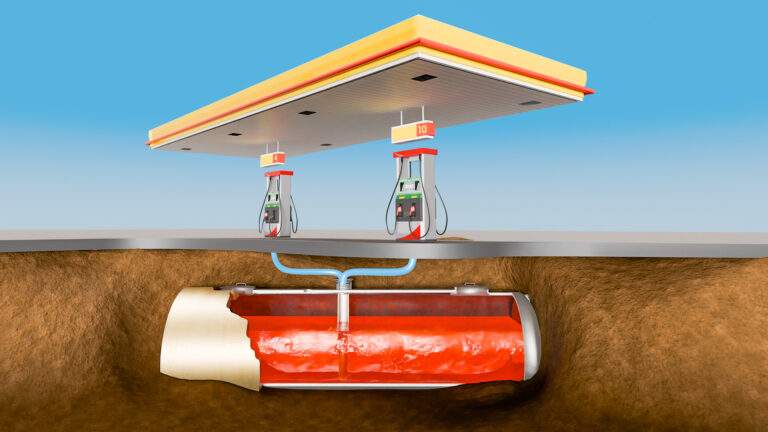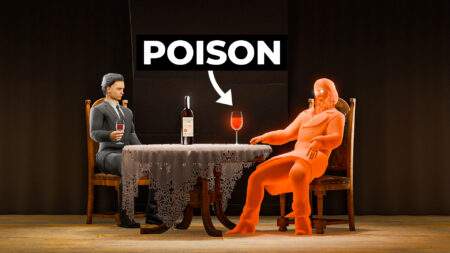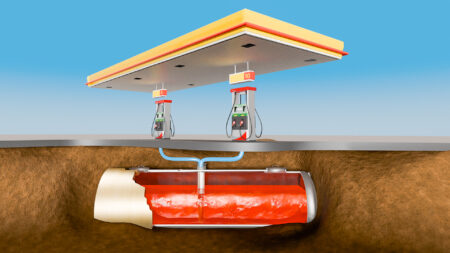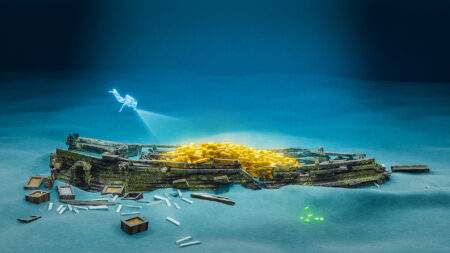It’s a cold, stormy night just off the coast of Florida in 1622. A Spanish cargo ship full of gold and silver is desperately trying to make its way back to Spain. But as it passes through the straits of Florida, it sails directly into a hurricane, sending the ship into a world of trouble. Its masts are torn apart, its rudder gets ripped off by the waves, and within minutes, the Atocha is brought down.
According to records, at least 500 million dollars worth of treasure went down that night, and its location eventually became a complete mystery.
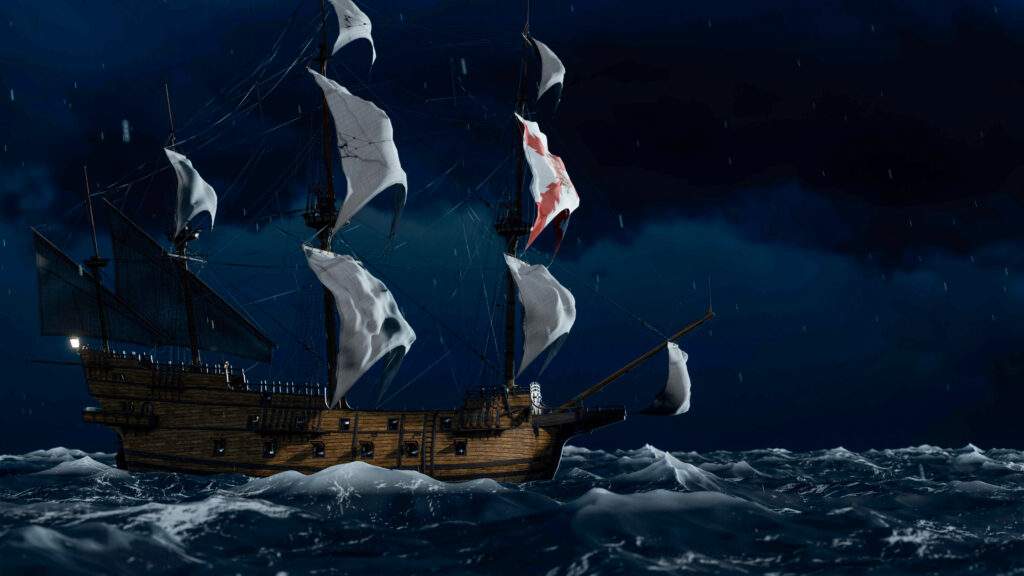
But more than 3 centuries later, after sitting at the bottom of the ocean, the motherlode of all treasure was finally discovered – and it proved to be more valuable than ever imagined!
In this story, you’ll see how one man and his team of DIY treasure hunters spent decades searching for the ship – and how their genius engineering and an old document eventually lead them to the most valuable shipwreck in history.
The Atocha sinking
When the Atocha went down that fateful evening, it ended up on a shallow reef in the Florida Keys, a 200 mile stretch of tiny islands. At the time, the location of the ship was known. But just a few weeks later, a second hurricane ripped the ship apart, leaving a trail of debris across the ocean floor. The location of the Atocha seemed to be lost forever – but records of its treasure were never forgotten.
According to its cargo manifest, it was holding 150 gold bars, 1,000 silver bars, and more than 50 chests full of coins. All-in-all, the treasure would be worth at least half a billion dollars today – all someone had to do was find it. That’s where American treasure hunter Mel Fisher came in.
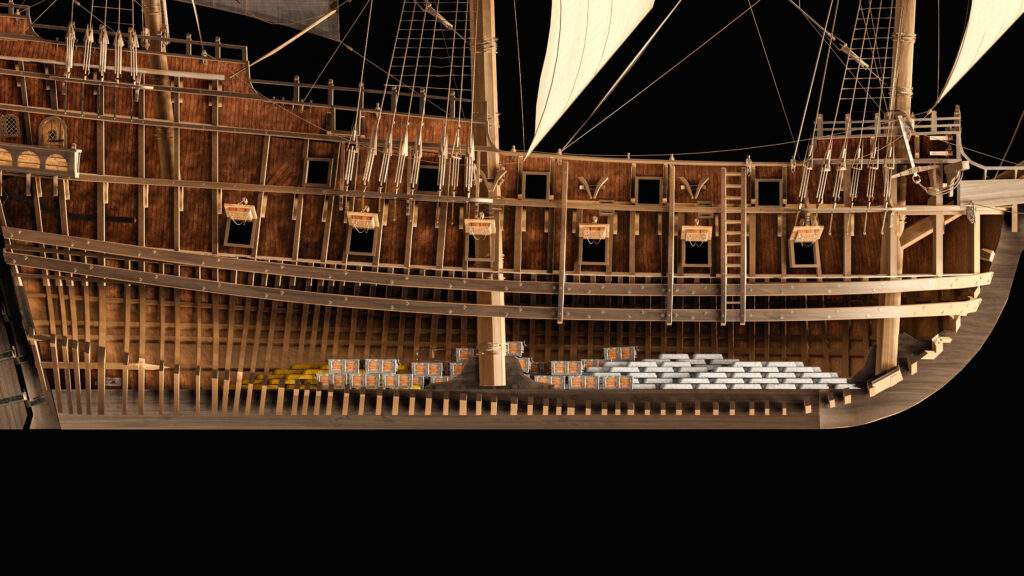
Mel Fisher
He had spent his entire life diving, and along with his wife, ran a diving school in California, teaching more than 60,000 people how to dive. With the allure of the Atocha sitting in the Florida Keys, Mel and his family moved across the country to dedicate their lives in search for its treasure.
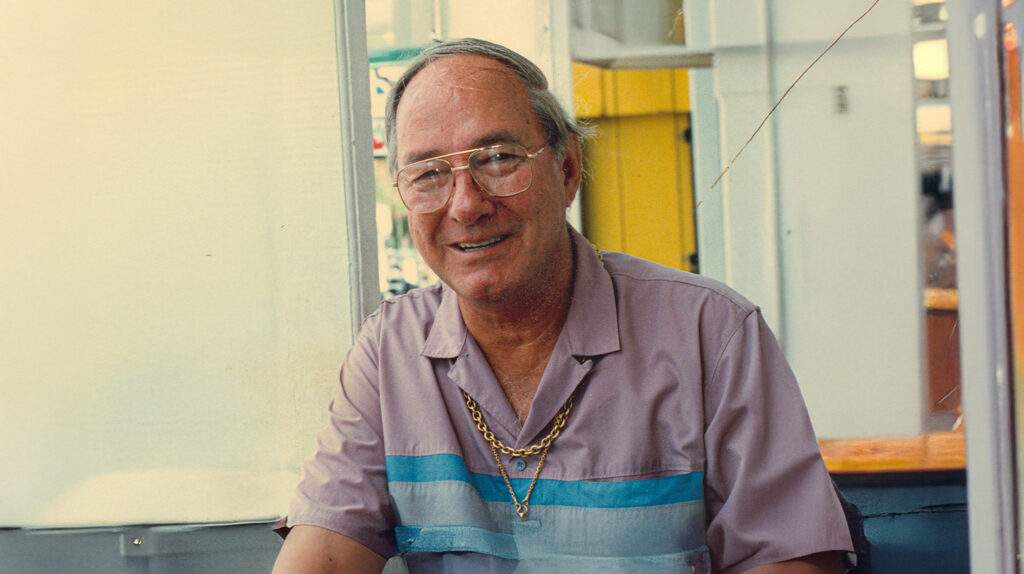
With little more than a boat and some metal detectors, they began their search in an area called the Matecumbe Keys, which had been mentioned in several 17th century documents. But after a year of searching and more than 100,000 miles covered, they hadn’t found a single thing. To many, finding the Atocha in this fast expanse of ocean was an impossible task, but Mel had a secret weapon, historian Eugene Lyon.
Wrong location
In order to learn more about where the Atocha sank, he went to the Spanish archives in Seville and came across this document. Dated just 4 years after the ship went down, it talked about a group of people attempting to salvage the ship.
On the very last page of the document, it mentioned that a search had taken place in an area called the Marquesas Keys, which was more than 100 miles from where Mel was searching. This small piece of information was key – Mel and his crew instantly moved their boat and started searching this new location.
But the divers were now searching in deeper water and they had one huge problem, visibility. Although the water was clear on the surface, at the bottom, the divers could barely see their own hands. And so, Mel came up with a genius yet simple solution.
He attached 2 large tubes called “mailboxes” to his boat that could be lowered down in front of the propellers. These would redirect the clear water from the surface, and shoot it down to the bottom where the divers were searching.
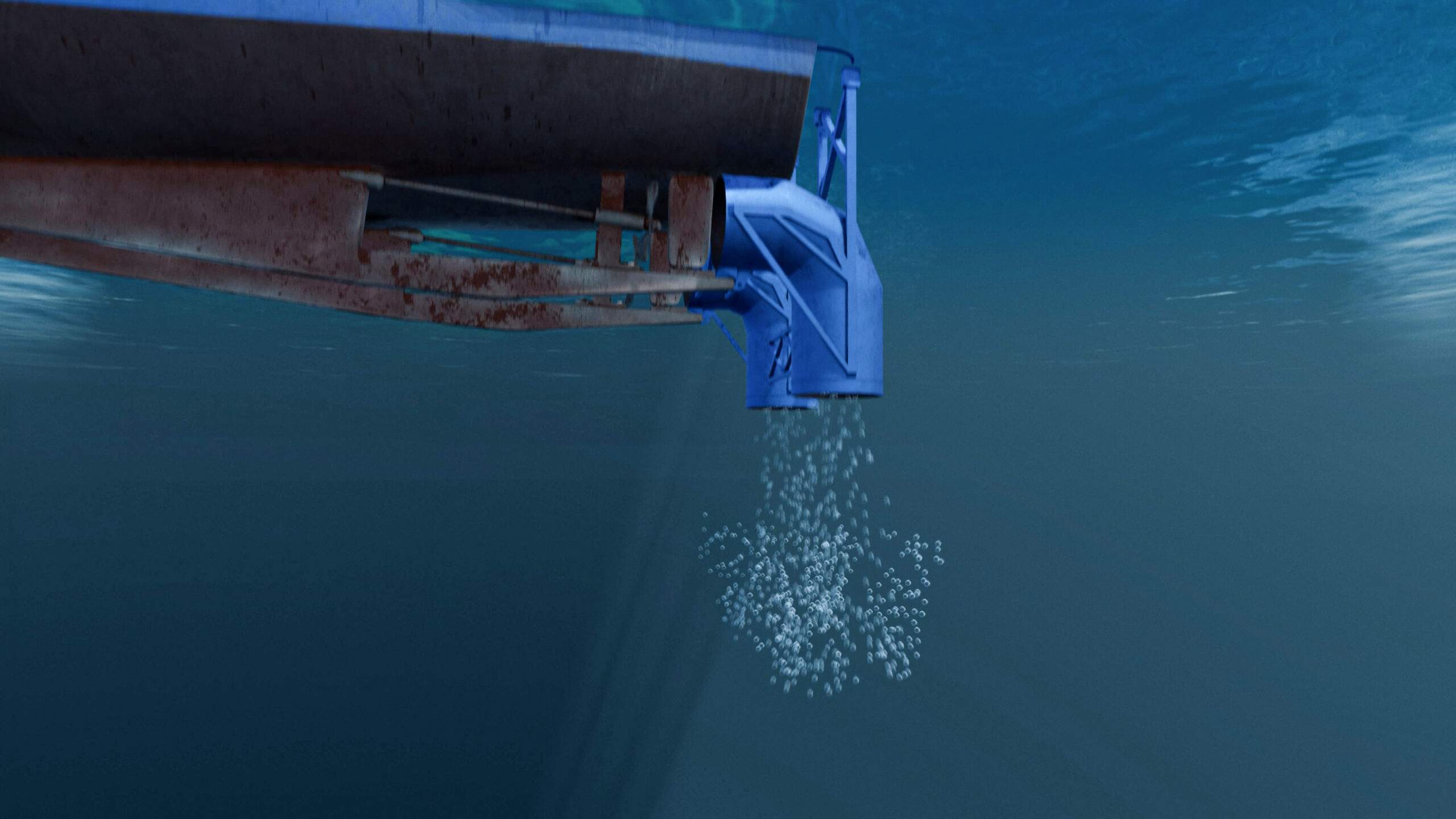
Not only did this clear up the muddy waters perfectly, it had the added benefit of digging a big hole and revealing whatever was buried underneath the sand.
First discovery
Then, one day in 1971, the sand cleared and revealed an enormous anchor. Although it wasn’t a piece of treasure, it was their first clue that perhaps the real thing wasn’t far away.
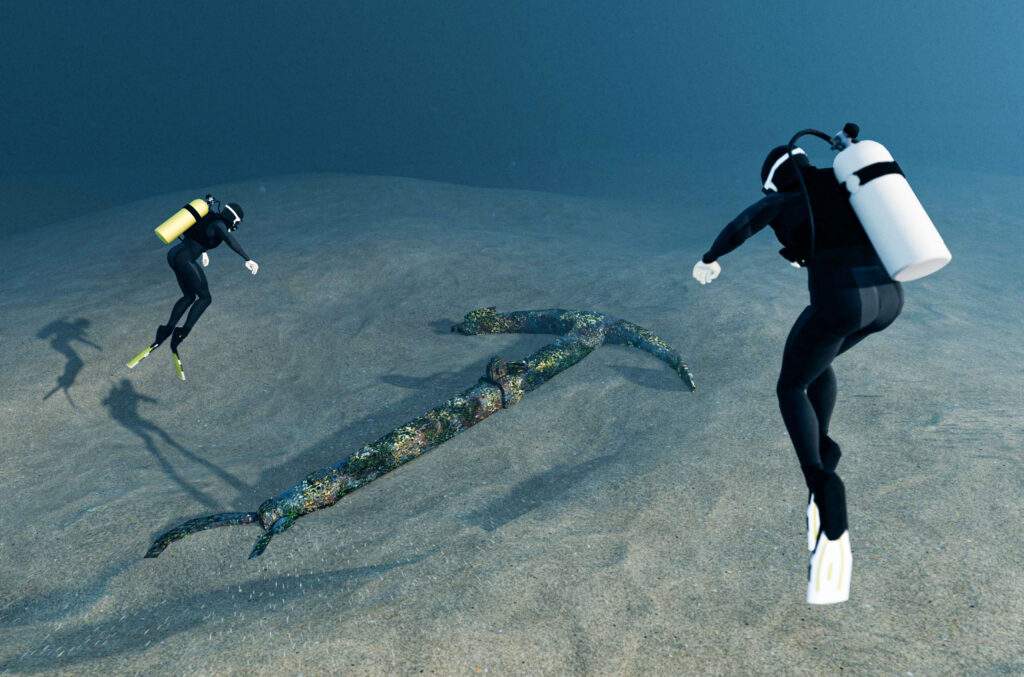
More artifacts started to show up like cups, swords, cannon balls and iron nails used to hold the ship together. To keep track of everything, they started building up a map of circles, showing where each piece of treasure had been found.
In order to keep track of where they had already searched, they placed two radio transmitters back on land. A receiver on the boat would measure the distance to both towers, and plot the boat’s exact position down to the nearest foot.
After a while, a clear line started to appear on the map, and they came to the conclusion that the Atocha’s motherlode must lie somewhere along this line.
In order to find the Atocha, the crew were following a trail of artifacts that seemed to be leading them to the motherlode of all treasure. But after 2 years of searching the line, the crew had failed to make any valuable discoveries.
First bit of treasure
Mel was running out of money fast, and if he didn’t find some treasure soon, he’d have no way of funding the search. But then, in 1973, just a few hundred feet away from the anchor, the crew came across a stash of silver coins and 3 huge silver bars, weighing over 60 lbs each. This find alone was worth well over 100,000 dollars, but it wasn’t clear if it was from the Atocha, or its sister ship, which also went down that night.
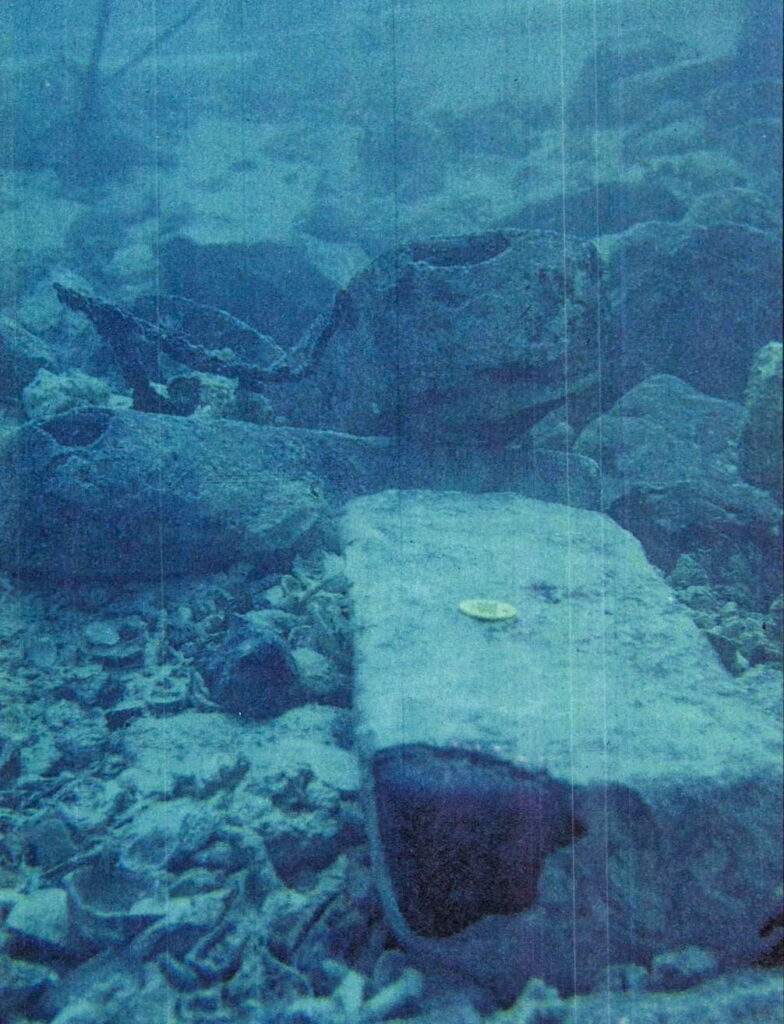
And so, they went back to the archives and looked at the ship’s cargo manifest. Every single piece of gold and silver was recorded in this document, along with their exact weight and serial number. By comparing the engravings on the silver bars to the document, they confirmed that the treasure trail they were following really was from the Atocha.
Thankfully, this search got the money flowing again, and the crew began selling off all the silver coins to fund the search. However, after 300 years at the bottom of the ocean, they were encrusted in a clump of silver chlorides, sulfides and calcium deposits.
The crew set up a workshop back at their headquarters and developed a production line to clean the coins. Arrocon 726, a substance would remove the calcification without eroding the silver. This transformed the calcification into a more manageable, mud-like goo that could be easily rinsed away, separating the coins.
To clean the individual coins, they went through electrolysis. The coins were suspended from alligator clips in a solution of 5-percent sodium hydroxide along with a stainless steel plate, which served as the anode. A carefully regulated electric current was passed through the coins, causing the deposits on them to ionize and migrate to the positively charged steel plate. Each tank could process about 600 coins every 48 hours.
The last step involved turning the coins over and over in a rock tumbler filled with a liquid burnishing compound and fine steel shot. After a final rinsing, the coins were clean and bright, and their markings ended up being more legible than with other methods of cleaning. The crew began systematically selling off the coins to make money. Mel and his crew were back in business!
With this influx of cash, the crew set out to find more treasure, armed with new sonar detecting technology. But just as they were starting to gain traction, the state of Florida began claiming ownership of all the treasure being found.
In 1975, the Supreme Court of the United States made a ruling on Florida’s coastal boundaries which clearly put the Atocha in international waters, beyond the control of the State of Florida. Despite this, the United States government tried claiming ownership of 100% of the treasure. To protect his 75-percent share, Mel filed an admiralty action in the U.S. District Court, claiming rightful owner ship since he he was the one discovering it.
In the meantime, the crew continued finding more and more objects on the line, a major find being 9 bronze cannons with Atocha markings engraved into their barrels.
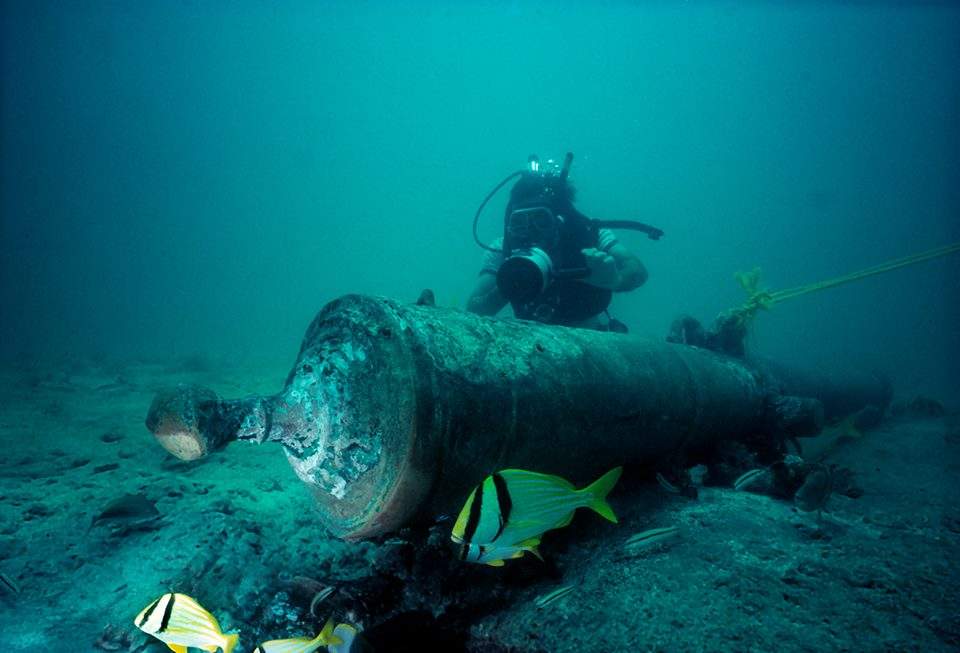
But just a day after finding these cannons, one of their boats capsized during the night, killing 3 of the crew, including Mel’s son.
3 years went by and the crew continued looking without finding any new clues – the line had run dry.
Atocha emeralds
Throughout the search, Mel had often mentioned a mysterious document he had read, written by one of the Atocha’s survivors.
According to Mel, one of the surviving sailors was punished for smuggling emeralds aboard the Atocha. The sailor, who knew he would be killed if found guilty, defended himself by saying: “Why are you bothering me about a little smuggling, when I helped the fleet’s admiral smuggle a 70-pound box of emeralds onto the Atocha?”
It was never clear where Mel had read this, but he was absolutely sure that there was more to the Atocha’s treasure than just gold and silver.
Meanwhile, after 8 years of legal battles, Mel won against the government and was finally granted the right to 100% of the treasure.
But by the end of the 70’s, Mel had spent over 6 million dollars looking for the Atocha, and the elusive treasure still hadn’t showed up. Every little object along the way had teased the crew, and it still seemed like the treasure had to be lying somewhere along the line. But all that was about to change.
The new line
In 1983, while on their way out to the line, the crew’s magnetometer started lighting up. Divers went down to check and they came across several metallic objects in a location, south east of the line. By plotting these on the map, a new line started to branch off from the original one.
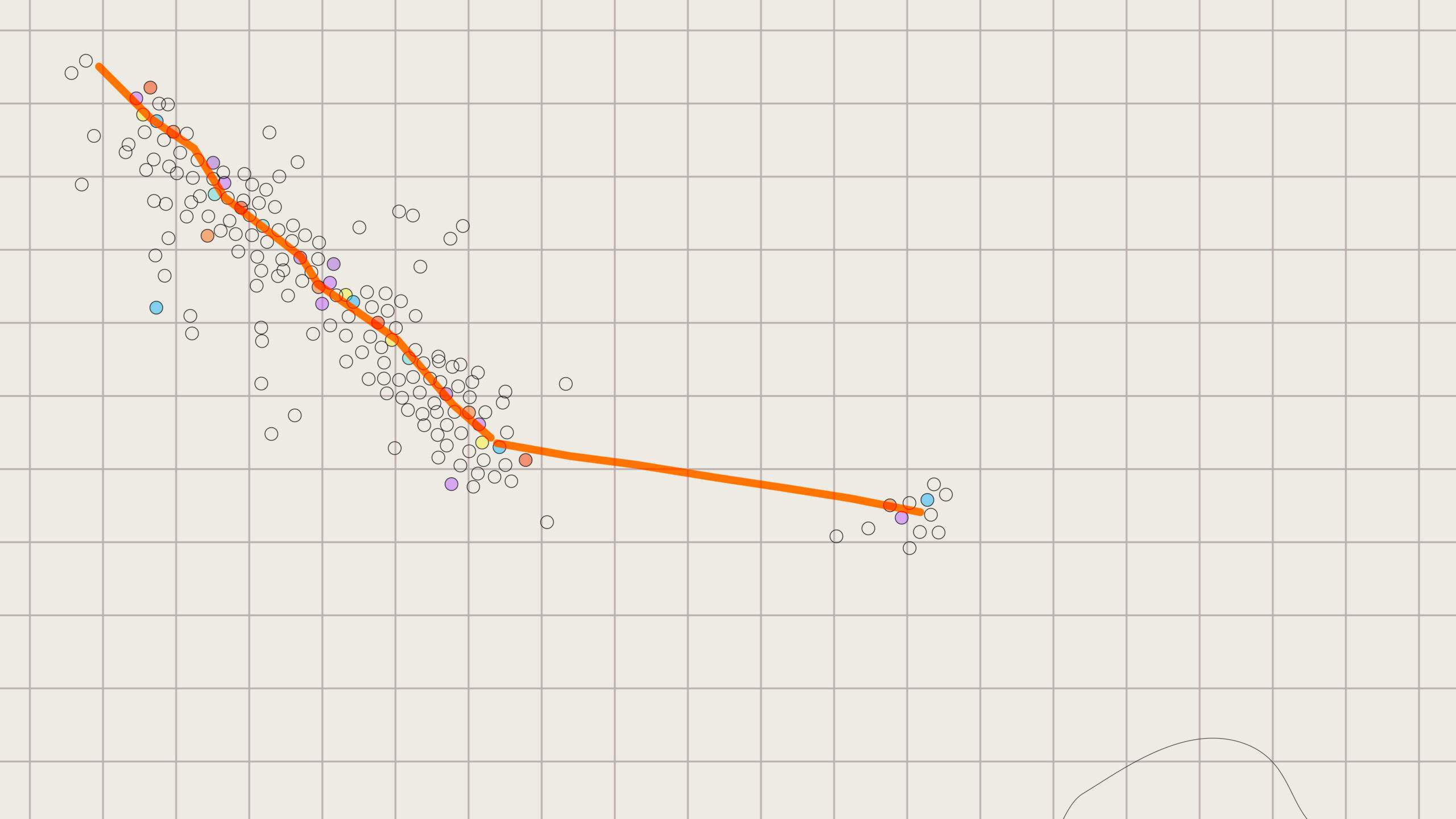
They knew that the ship was ripped apart a month after it sank, so it was possible that the debris was carried on a different path. They followed this new line for a couple of years and it continued to reveal little bits of treasure.
Finding the Atocha’s motherlode
Then, on the 20th of July, 1985, exactly 10 years after the tragic death of the 3 crew members, a large but faint object showed up on their sonar scanner. 2 divers immediately entered the water and began searching for it.
On a hunch, Greg Warehem decided to wander off about 100 yards to the east, and there it was. Sitting in front of him was an 80 foot long shipwreck, with piles upon piles of silver bars sitting on top. Off to the side were several chests, full of coins and gold bars glinting in the light. There was no doubt that after 16 years of searching, Mel and his crew had finally found the motherlode.

Amazingy, hidden within the wreck was a thumb sized emerald, worth over 800,000 dollars alone. Elsewhere in the wreckage, another one popped up, this time worth over a million dollars. Eventually more than 2,000 of the finest uncut emeralds were discovered, and Mel’s story turned out to be true after all.
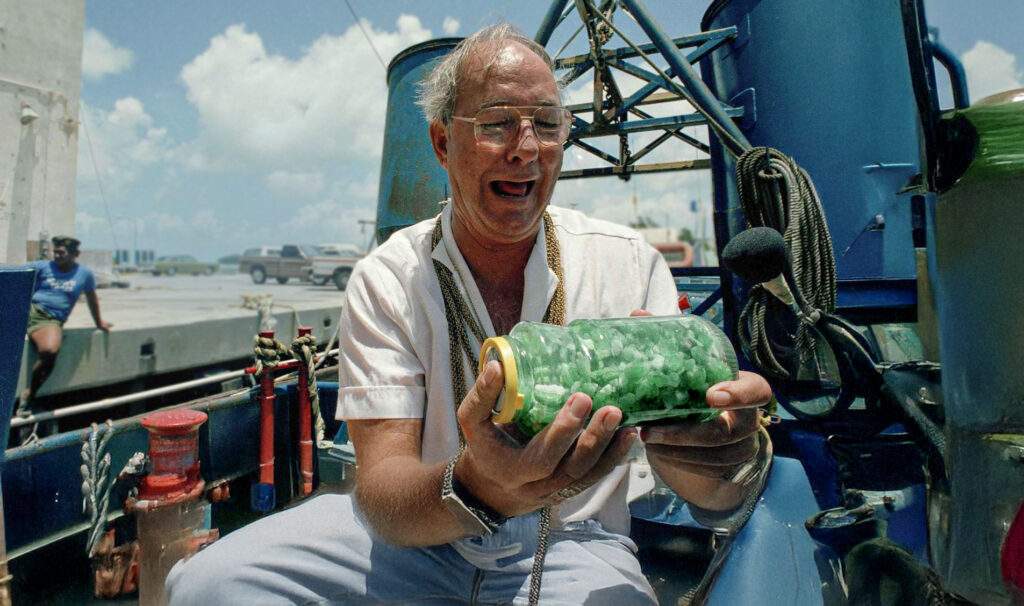
To this day, Mel’s company continues to find treasure from the Atocha, and the value pulled up from the ocean is now most likely well over 500 million dollars.
Atocha emerald robbery
The Atocha Star emerald is 12 carat emerald from the ship chosen by Mel Fisher as a gift to Deo Fisher, his wife. The Atocha Star was mounted between the claws of an 18 pounds (8.2 kg) solid gold statue of an eagle, known as The Golden Eagle or The Maltese Eagle. The emerald itself is estimated to be worth between $3.2 and $5 million.
The statue had been on display for 4 days at an art exhibit in Vancouver, Canada. On May 30, 2016 Ron Shore, who was in possession of the statue, was robbed as he was walking back from a concert. The robber ran away with Shore’s backpack which had the golden statue inside it, it has still not been located.
